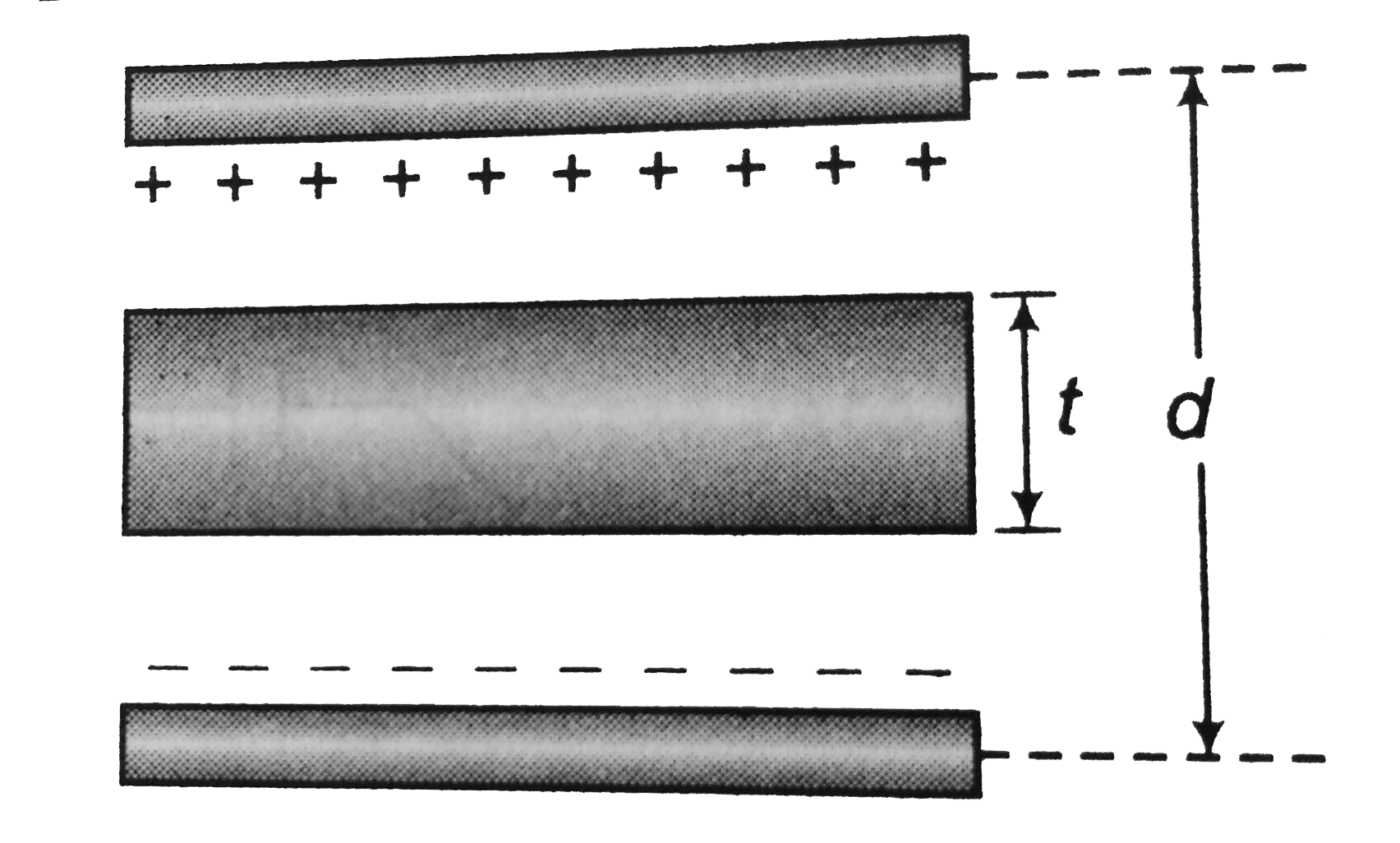Figure shows a parallel-plate capacitor with plates of width b and length l. The separation between the plates is d. The plates are rigidly clamped and connected to a battery of emf V. A dielectric slab of thickness d and dielectric constant K is slowly inserted between the plates. Calculate the energy of the system when a length x of the slab is introduced into the capacitor.

(a) The plates area of the part with the dielectric at any time is bx. Its capacitance is
Similarly, the capacitance of the part without the dielectric is
These two parts are connected in parallel. The capacitance of the system is, therefore,
The energy of the capacitor is
(b) Suppose, the electric field attracts the dielectric slab with a force F. An external force of equal magnitude F should be applied in opposite direction so that the plate moves slowly (no acceleration).
Consider the part of motion in which the dielectric moves a distance dx further inside the capacitor. The capacitance increases to . As the potential difference remains constant at V, the battery has to supply a further charge
to the capacitor. The work done by the battery is, therefore,
The external force F does a work
during the displacemen. The total work done on the capacitor is
.
This should be equal to the increase dU in the stored energy. Thus,
Thus, the electric field attracts the dielectric into the capacitor with a force and this minimum force should be applied in the opposite direction, so as to remove it from the capacitor.
Similar Questions
Shown a parallel plate capacitor with plates of width b and length l. The separation between the platesis d. The plates are rigidly clamped and connected to a battery of emf V. A dielectric slab of thickness d and dielectric constant K is slowly inserted between the plates. (a) Calculate the energy of the system when a length x of the slab is introduced into the capacitor. (b) what force should be applied on the slab to ensure that is goes slowly into the capacitor? Neglect any effect of friction or gravity.

View SolutionConsider the diagram,

A parallel plate capacitor has the plate width t and length L while the separation between the plates is d. The capacitor is connected to a battery of voltage rating V. A dielectric which carefully occupy, the space between the plates of the capacitor is slowly inserted between the plates. when length x of the dielectric slab is introduced into the capacitor, then energy stored in the system is
View SolutionA parallel plate capacitor has plate of length 'l' width 'w' and separation of plates is 'd' . It is connected to a battery of emf V . A dielectric slab of the same thickness 'd' and of dielectric constant k=4 is being inserted between the plates of the capacitor . At what lenght of the slab inside plates , will the energy stored in the capacitor be two time the initial energy stored ?
View SolutionA parallel plate capacitor of capacitance 90 pF is connected to a battery of emf 20 V. If a dielectric material of dielectric constant K=53 is inserted between the plates, the magnitude of the induced charge will be :
View SolutionFigue shows a parallel plate capacitor with plate area A and plate separation d. A potential difference is being applied between the plates. The battery is then disconnected and a dielectric slab of dieletric constant K is placed in between the plates of the capacitor as shown.

The electric field in the dielectric slab is
View SolutionFigure shows a parallel plate capacitor with plate area A and plate separation d. A potential difference is being applied between the plates. The battery is then disconnected and a dielectric slab of dieletric constant K is placed in between the plates of the capacitor as shown.

The electric field in the gaps between the plates and the electric slab will be
View SolutionA dielectric slab is inserted between the plates of an isolated capacitor. The force between the plates will
View SolutionA capacitor with plate separation d is charged to V volts. The battry is disconnected and a dielectric slab of thickness d2 and dlelectric constant '2' is inserted between the plates. The potential difference across its terminals becomes
View SolutionWhen a dielectric slab is gradually inserted between the plates of an isolated parallel-plate capacitor , the energy of the system decreases.What can you conclude about the force on the slab exerted by the electric field?
View SolutionSeparation between the plates of a parallel plate capacitor is d and the area of each plates is A. When a slab of material of dielectric constant k and thickness t(t<d) is introduced between the plates. Its capacitance becomes
View Solution

